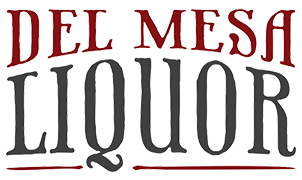Wine collecting can be a fascinating and rewarding hobby, but the prospect of building a collection can be daunting for those who are just starting. Fortunately, plenty of resources are available to help you get started, including your local alcohol store.
Whether you are a seasoned wine enthusiast or a novice looking to explore the world of wine, the staff at your favourite alcohol store can be a valuable source of information and guidance. They can help you identify the different types of wines, explain the key factors contributing to a wine's quality and taste, and recommend specific bottles to add to your collection based on your preferences and budget.
In this blog, we'll explore the basics of wine collecting, including how to start your own collection and what to look for when selecting wines to add to your collection. So whether you're a budding wine collector or a seasoned pro, read on to discover how to take your wine collection to the next level.
Step 1: Start By Visiting An Alcohol Store
The first step to starting your wine collection is visiting an alcohol store. Look for a store specializing in wine or a knowledgeable staff to help you select. When you arrive, ask the staff for your taste preferences and budget recommendations. They can provide you with a list of wines worth trying and help you avoid the ones that may not be as enjoyable.
While at the alcohol store, take the time to read the labels and learn about the different types of wines. This will help you become more familiar with the terms used to describe wine, such as "tannins" and "terroir." Knowing the basics of wine terminology will help you make better decisions when selecting wines for your collection.
Step 2: Determine Your Budget
Once you've found a reliable alcohol store to begin your wine collecting journey, it's time to determine your budget. Wine collecting can be expensive, but it doesn't have to break the bank. Setting a budget will help you make informed decisions about the types of wines you can afford and prevent overspending.
When determining your budget, consider the costs of wine storage, insurance, and possible resale value. Remember, the most expensive wines may not necessarily be the best for your collection.
By setting a budget, you can build a wine collection that not only satisfies your palate but also your wallet.
Step 3: Focus On Quality
When starting a wine collection, it is crucial to focus on quality. This means selecting wines that taste great, offer value, and age well over time. Quality wines come from reputable producers, vineyards with a track record of excellence, and vintages that experts and critics highly rate.
To ensure quality, educating yourself on the various factors that contribute to a wine's taste and value, such as grape varietals, terroir, winemaking techniques, and aging potential is important. Additionally, consider purchasing wines stored in optimal conditions with a proven track record of aging well.
When focusing on quality, it is also important to recognize that a higher price does not always equate to higher quality. Some of the best wines in the world can be found at reasonable prices, and often the lesser-known or up-and-coming producers offer the best value for the price.
By focusing on quality, you can build a wine collection that not only provides enjoyment in the present but also has the potential to increase in value and significance over time.
Step 4: Start With The Classics
When it comes to building a wine collection, it's important to start with the classics. These are wines that have stood the test of time and are beloved by wine enthusiasts around the world. Classic wines like Bordeaux, Burgundy, and Champagne have a rich history and a proven track record of excellence, making them a safe and reliable choice for any wine collection.

Your local alcohol store is great for starting your search for classic wines. They will likely carry a wide variety of these timeless wines from different regions and vintages. By starting with the classics, you can establish a solid foundation for your collection and gain a deeper understanding of the world of wine.
Step 5: Consider Cellaring Potential
When starting a wine collection, it's important to consider the cellaring potential of the wines you choose. Cellaring potential refers to a wine's ability to age and improve in flavour over time.
Wines with high cellaring potential typically have a higher alcohol content and are stored in proper aging conditions, such as a temperature-controlled wine cellar.Investing in wines with cellaring potential can provide a great return on investment, as their value can increase over time.
However, it's important to note that not all wines are meant for aging and should be consumed within a few years of purchase. So, when starting your collection, be sure to do your research and consult with an expert at your local alcohol store.
Step 6: Look For Limited Edition Wines
Limited edition wines are a great way to add exclusivity and rarity to your wine collection. These wines are often produced in small quantities and are highly sought after by collectors and enthusiasts alike.

When seeking out limited edition wines, it is important to research the producer and vintage to ensure you are investing in a high-quality wine. Keep an eye out for special bottlings, labels, and wines that have been aged in unique ways. Adding limited-edition wines to your collection can be a thrilling and rewarding experience and increase the value of your collection over time.
Step 7: Store Your Wine Properly
Once you have started your collection, it is important to store your wine properly to ensure that it ages well and maintains its value. Wine should be stored in a cool, dark place with a constant temperature between 50 and 60 degrees Fahrenheit.
Humidity should be maintained at around 70 per cent to prevent the corks from drying out. Wine bottles should be stored on their sides to keep the corks moist and prevent air from entering the bottle. It is also important to avoid storing wine in a place with strong odours, as wine can easily absorb odours and flavours from its environment.

Step 8: Join A Wine Club Or Attend Tastings
Joining a wine club or attending tastings is a great way to learn more about wine and discover new varieties to add to your collection. Wine clubs often offer exclusive access to limited-edition wines and discounts on purchases.
Tastings allow you to try various wines without committing to a full bottle. They are also a great way to meet other wine enthusiasts and learn more about the different regions and styles of wine.
In addition to wine clubs and tastings, consider joining online wine communities or forums. These groups provide a platform to share information, ask questions and connect with other wine enthusiasts.
Final Thoughts
In conclusion, wine collecting can be an enjoyable and rewarding hobby for those passionate about wine. Starting a collection can initially seem overwhelming, but anyone can begin their own wine collection with some knowledge and guidance.
When starting a collection, it is important to determine your budget and preferences and consider the proper storage and aging conditions for the wine. Additionally, it is important to educate yourself on the various types of wine and the factors that contribute to their quality and value.
As you build your collection, remember to be patient and select wines that appeal to your tastes and budget. Don't be afraid to seek advice from experts or other wine collectors, and always be willing to try new wines and expand your palate.
 Log in
Log in
 My Wishlist
My Wishlist Reward Program
Reward Program Corporate Gifts
Corporate Gifts Customer Help
Customer Help


